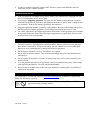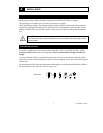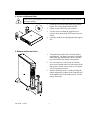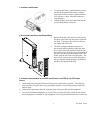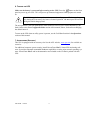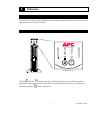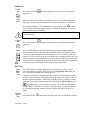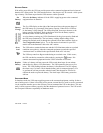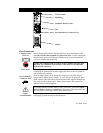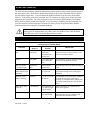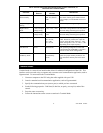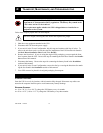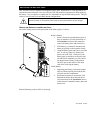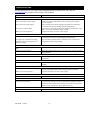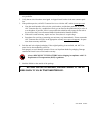
990-1060B 12/2005 10
BATTERY POWER
If the utility power fails, the UPS can provide power to the connected equipment from its internal
batteries for a finite period. The UPS sounds an alarm—four beeps every 30 seconds—while operat-
ing on battery. The alarm stops when the UPS returns to online operation.
On
Battery
When the On Battery indicator is lit the UPS is supplying power to the connected
equipment from its batteries.
Battery
Charge
The five-LED display on the right of the front panel shows the present charge of
the UPS battery as a percentage of the battery capacity. When all five LEDs are
lit, the battery is fully charged. The LEDs extinguish, from top to bottom, as the
battery capacity diminishes. Refer to the figure at left for the battery capacity
threshold (values are not listed on the UPS).
As a low battery warning, any LEDs illuminated (for the given capacity) flash and
the UPS beeps continuously. The low battery warning default setting can be
changed in terminal mode or through the optional PowerChute software. Refer to
User Configurable Items, below. To see the runtime in minutes for your UPS
model refer to the Runtime Table at the APC website.
Over-
load
The UPS emits a sustained alarm tone and this LED illuminates when an overload
condition occurs (that is, when the connected equipment exceeds the specified
“maximum load” as defined in the specifications at the APC web site).
The UPS may transfer to Bypass mode during an overload event. If this occurs,
the UPS can then be returned to online mode by pressing the
button. Dis-
connect nonessential equipment from the UPS to eliminate an overload.
Replace
Battery
Failure of a battery self-test causes the UPS to emit short beeps for one minute
and the Replace Battery LED illuminates. The UPS repeats the alarm every five
hours. The LED flashing indicates the battery is disconnected. The UPS repeats
the alarm every five hours. Check that the battery pack is connected properly. If it
is, perform the self-test procedure after the battery has charged for 24 hours to
confirm the need to replace the battery. The alarm stops if the battery passes the
self-test.
S
HUTDOWN MODE
In shutdown mode, the UPS stops supplying power to the connected equipment, waiting for the re-
turn of utility power. If there is no utility power present, external devices (such as servers) connected
via the computer interface port or the accessory slot can command the UPS to shut down. This nor-
mally is done to preserve battery capacity after the shutdown of protected servers. The UPS scrolls
the front panel indicators sequentially in shutdown mode.



